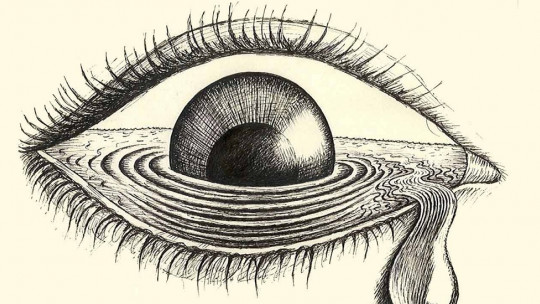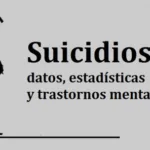
Talking about suicide is painful and extremely uncomfortable, but that doesn’t mean we should stop doing it. Today, there is a broad consensus among mental health researchers and professionals about the importance of talking about suicide to prevent it. Contrary to one of the most widespread myths about people who decide to take their own lives, talking about suicide does not induce people to commit it, but can save lives.
However, it is still a taboo topic in our society, which results in a poor dissemination of scientific information. Therefore, it is normal that many people do not know if it is possible to notice the signs of suicide in time or not. In this article we will address this topic in order to promote suicide prevention.
Demystifying what we know about suicide
First of all, it is necessary to demystify some conceptions that we have all developed around suicide to understand it better. According to data provided by the World Health Organization in 2019, Suicide was the fourth cause of death in the age group between 15 and 29 years ; Other statistics suggest that, in adolescents, it is the second cause. Now: why does a person decide to take their own life?
This question is very complex, and attempting to answer it comprehensively in an article would mean leaving aside the particular suffering of each person who attempts suicide. This is a multi-causal phenomenon. However, one common point reached by mental health researchers and professionals around the world is the fact that people who take their own lives do not do so because they do not want to live any longer, but because they do not want to live any longer. So. Suicide, then, appears as an alternative to the impossibility of resolving one or more conflicts. The act of taking one’s life can be impulsive or planned, but in both cases the presence of a lot of suffering remains as a common denominator.
Risk factors associated with suicide
On the other hand, recognizing the risk factors that lead a person to commit suicide is relevant to prevent it. According to the WHO, experiencing interpersonal conflicts, violent acts, situations of abuse, loss of loved ones, catastrophes and war conflicts, breakups or having the feeling of isolation can lead to suicidal behavior. Also, those social groups that suffer discrimination are particularly vulnerable, such as refugees and migrants, indigenous peoples or LGBTIQ+ people. Besides, the presence of mental disorders—especially substance dependence disorder and depression—is a risk factor significant.
All of these risk factors, in and of themselves, do not lead a person to take their own life. However, someone belonging to a vulnerable population is more likely to accumulate problems that are difficult to resolve, trigger crises, ruminate recurrently, have suicidal ideations until, if they cannot find another way out, they attempt suicide. We could think of each phase of the suicidal process as a step. The presence of risk factors will make it easier to go down a step.
Are there signs of suicide?
Having developed this, it is important to clarify two issues. Firstly, the presence of suicidal thoughts does not necessarily mean that a person is at risk of committing it. Thoughts have a certain degree of automaticity that could cause even a person with abundant protective factors and high levels of general well-being to think about it. However, suicidal ideation as such implies the recurrent presence of this type of thoughts accompanied by a share of unbearable suffering for the person.
On the other hand, it is also necessary to remember that suicide, in itself, is not a mental disorder. It is true that people with psychopathology – especially depression, alcoholism or some personality disorders such as borderline disorder – are at greater risk of committing suicide than people without a mental disorder. However, many individuals live with mental disorders for long periods of their lives and do not intend to commit suicide; or vice versa, there are people without psychological disorders who commit it. This information must be useful to pay attention to all subjects, regardless of the presence or not of a mental illness, since any of them could be suffering in silence and making an attempt to take their own life.
Returning to our initial question, we can affirm that yes, it is possible to notice the signs of suicide in time.
Some statistics indicate that 80% of people who commit suicide have given verbal or non-verbal cues in the month before their death. For this reason, it is important to know what signs precede a suicide and that could indicate that a person is thinking about taking their own life.
Some signs of suicide
Some signs that a person might be thinking about suicide are:
If we see it, we ask it
Suicide is prevented and the preferred strategy to achieve it can be summarized in a slogan: “if we see it, we ask.” Although it may be uncomfortable, only by asking can we confirm or rule out that a person is thinking about suicide (for example, we could ask: are you thinking about taking your own life?). If the answer is affirmative, We must be available to listen to the other person, with closeness, without trials or sanctions. We should not confront others or hold derogatory opinions. We must be available, listen to the other in time, without interrupting and with a hopeful attitude (that is, be willing to accompany the vulnerable person so that they reach professional hands as soon as possible).








